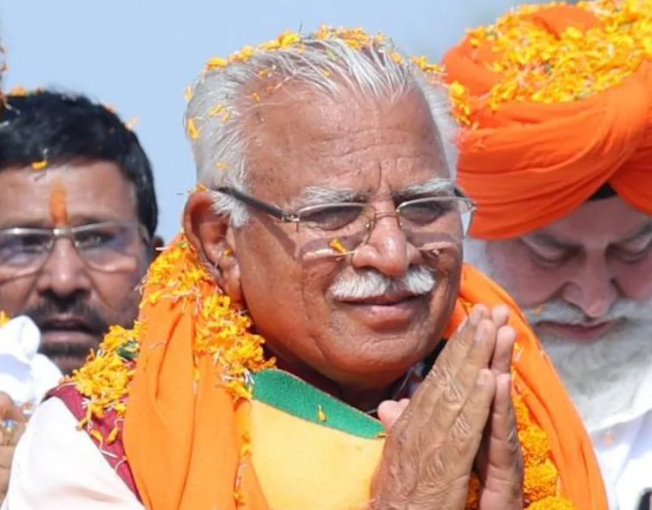Introduction:
As the political landscape in Haryana heats up, the fate of Chief Minister Manohar Lal Khattar and his ministers hangs in the balance as voters gear up for Phase 6 of the elections. Scheduled for [insert date], this phase holds immense significance in determining the direction of the state’s governance for the coming years.
You May Also Like: A Tragic End: Madhya Pradesh Man Dies During 25-Km Walk Test for Forest Guard Post
The Khattar Effect:
Manohar Lal Khattar, the incumbent Chief Minister of Haryana, has been at the helm since 2014, leading the Bharatiya Janata Party (BJP) government. His tenure has been marked by various reforms and initiatives aimed at bolstering the state’s development. However, it has also witnessed challenges and criticisms, particularly regarding issues such as agricultural policies and law and order.
The Battle for Power:
Phase 6 of the elections will witness a fierce battle between the BJP and its rivals, including the Indian National Congress and other regional parties. The outcome will not only determine the fate of individual candidates but also have significant implications for the overall political landscape of Haryana.
Key Contenders:
Apart from Manohar Lal Khattar, several key ministers and prominent leaders from both the ruling party and the opposition will be contesting in Phase 6. Their performance in these elections will not only shape their political futures but also influence the dynamics of governance in the state.
Issues at Stake:
Several critical issues are likely to dominate the discourse during Phase 6 of the elections. These may include agricultural reforms, unemployment, infrastructure development, healthcare, and education, among others. Voters will assess the performance of the incumbent government and evaluate the promises made by opposition candidates before casting their votes.
Campaigning Blitz:
In the run-up to Phase 6, political parties have intensified their campaigning efforts, holding rallies, roadshows, and public meetings across various constituencies. Leaders from all sides are leaving no stone unturned to woo voters and secure their support.
Electoral Dynamics:
Haryana’s electoral landscape is characterized by a complex interplay of caste equations, regional dynamics, and developmental aspirations. Candidates and parties are strategically positioning themselves to appeal to different sections of the electorate, making alliances and promises tailored to specific constituencies.
The Role of Voter Turnout:
As with any election, voter turnout will play a crucial role in determining the outcome of Phase 6. High turnout often indicates strong public participation and engagement with the democratic process, while low turnout can raise questions about the legitimacy of the results.
Also Visit: Empower Your Immune System: Harnessing the Power of Superfoods for Optimal Health
Conclusion:
Phase 6 of the elections in Haryana represents a pivotal moment in the state’s political journey. The electorate holds the power to shape the destiny of Manohar Lal Khattar, his ministers, and the course of governance for the next term. As voters head to the polls, their decisions will not only impact the future of individual leaders but also resonate deeply in the corridors of power across Haryana.
